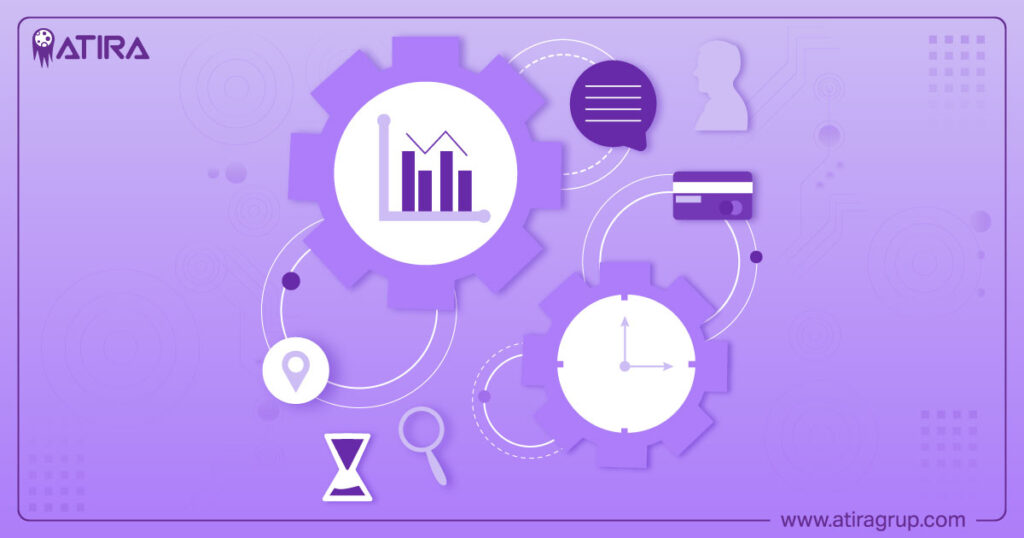Curious about the future of digital transformation? This article explores the key trends and technologies set to shape the digital landscape. We’ll delve into AI, quantum computing, edge computing, and IoT, offering insights on how to navigate and capitalize on these advancements. Learn how these trends will impact businesses and what strategies to adopt for staying ahead.
Key Takeaways
- Emerging technologies such as AI, machine learning, quantum computing, and edge computing are essential to driving digital transformation, enhancing operational efficiency, and enabling innovative business models.
- The Internet of Things (IoT) plays a significant role in modernizing business processes and smart city infrastructure, facilitating real-time data access and improving supply chain management.
- Organizations must adopt a robust digital transformation strategy that includes assessing digital maturity, setting clear objectives and KPIs, and overcoming cultural resistance to successfully integrate new technologies.
Table of Contents
Emerging Technologies Driving Digital Transformation
Digital transformation is fueled by the rapid development and deployment of emerging digital technology. These technologies are not just tools but catalysts that redefine digital business transformation processes and customer interactions, often facilitated by digital transformations, digital transformation trends, and digital transformation service providers.

Among the most influential are:
- Artificial intelligence (AI)
- Machine learning (ML)
- Quantum computing
- Edge computing
These innovations are at the forefront of digital transformation efforts, each offering unique benefits that enhance digital capabilities and operational efficiencies.
AI and ML, for instance, are revolutionizing data collection and analysis, providing insights that surpass human capabilities. Quantum computing is set to transform industries by handling complex computations at unprecedented speeds. Meanwhile, edge computing brings computation closer to data sources, improving response times and reliability. These technologies form the backbone of modern digital transformation strategies, enabling businesses to innovate and adapt swiftly.
Exploring these technologies reveals their specific applications and impacts, such as AI’s enhancement of decision-making, quantum computing’s industrial potential, and edge computing’s real-time benefits. Each subsection will provide a comprehensive look at these advancements driving the digital revolution.
Artificial Intelligence and Machine Learning
Artificial intelligence (AI) and machine learning (ML) are at the heart of the digital revolution, driving significant innovations across various sectors. AI expands the digital segment by enabling businesses to interact with customers in new and more efficient ways. With the help of AI, companies can automate complex workflows, enhance decision-making processes, and reduce operational costs.
The benefits of AI and ML are manifold. These technologies assist in enhancing human decision-making capabilities by providing predictive analytics and insights that improve operational efficiency. For instance, predictive analytics utilizes historical data and machine learning to identify risks and opportunities, allowing businesses to make informed decisions. Moreover, generative AI creates new opportunities for innovation, shaping future business landscapes and operational strategies.
However, the responsible use of AI is crucial to avoid ethical dilemmas and misuse of technology. The goal of augmented intelligence is to enhance human knowledge and capabilities, not replace human workers. Responsible AI use allows businesses to optimize processes and workflows, improving interactions between humans and machines.
Quantum Computing
Quantum computing is poised to revolutionize digital transformation by handling complex computations at speeds unattainable by traditional computers. This technology is transforming industries such as finance, healthcare, and logistics by enabling faster and more efficient problem-solving. For example, quantum computing can aid in drug development, medical image processing, and optimizing supply chain logistics.
Businesses exploring quantum computing must consider which functions will have the most significant impact on their transformation initiatives. By integrating quantum computing into their digital strategies, organizations can streamline operations, enhance data security, and drive innovation.
With ongoing evolution, quantum computing will offer new opportunities for growth and efficiency across various sectors.
Edge Computing
Edge computing brings computation closer to data sources, facilitating real-time analysis and improved data security. This technology enhances digital transformation by providing faster response times and greater reliability, which leads to improved performance and increased profitability. By processing data closer to its source, edge computing reduces latency and enhances the efficiency of digital operations.
The benefits of edge computing are particularly evident in applications that require real-time processing, such as autonomous vehicles and smart cities. By enabling quick and efficient data processing, edge computing supports the rapid deployment of new digital solutions and enhances the overall digital capabilities of organizations.
Adopting edge computing leads to significant improvements in performance and security, advancing digital transformation efforts.
The Role of IoT in Future Digital Business Models
The Internet of Things (IoT) is reshaping digital business models by enhancing interconnectivity among devices and providing data-driven insights that drive efficiency and innovation. IoT devices contribute to optimizing business processes by gathering operational data, enabling real-time feedback mechanisms that allow businesses to adjust offerings quickly based on customer preferences.

Exploring IoT’s role in digital transformation reveals its impact on supply chain management and smart cities, enhancing operational efficiency, improving resource management, and creating new business opportunities.
From smart tracking systems in supply chains to IoT-enabled urban management, the possibilities are vast and transformative.
Enhancing Supply Chain Management
IoT plays a crucial role in enhancing supply chain management by enabling real-time data access and integration. Notable applications include smart tracking systems that provide real-time location updates, reducing waste and boosting productivity in logistics processes. For example, IoT platforms can monitor food transportation conditions, ensuring optimal temperature maintenance.
By leveraging IoT, businesses can streamline processes, reduce operational costs, and greatly aid company scaling. The integration of IoT systems into supply chain management not only enhances efficiency but also improves customer satisfaction by ensuring timely and accurate deliveries.
This successful digital transformation of supply chains is essential for businesses aiming to remain competitive in the digital age.
Smart Cities and Infrastructure
IoT technologies are integral to the development of smart cities, enhancing urban management through efficient systems for traffic control, waste management, and public service delivery. Smart cities utilize IoT to improve resource management and citizen engagement, enabling real-time monitoring of urban resources to optimize energy consumption and reduce waste.
For example, IoT applications facilitate better traffic management by providing data for optimizing flow and reducing congestion. Additionally, citizen participation is enhanced through IoT, allowing real-time reporting of issues and service requests, leading to more responsive and efficient public services.
The digital transformation initiatives in smart cities demonstrate the potential of IoT to create more sustainable and livable urban environments.
Cloud Technologies and Multi-Cloud Strategies
Cloud technologies are pivotal in enhancing scalability and resilience in digital transformation initiatives. By leveraging cloud services, organizations can avoid the complexities of managing their own data centers, benefiting from the security and dependability provided by cloud service providers. Platform-as-a-Service (PaaS) simplifies application development and reduces infrastructure management tasks, allowing businesses to focus on innovation.

Adopting a multi-cloud strategy allows businesses to utilize diverse services from various cloud providers, increasing flexibility and reducing downtime risks. Cloud-native applications scale more readily and yield better outcomes, enhancing operational efficiency.
Exploring multi-cloud strategies highlights their benefits and challenges, showing how businesses can optimize cloud technologies for successful digital transformation.
Benefits of Multi-Cloud Utilization
A multi-cloud approach helps organizations avoid being overly dependent on a single provider, promoting flexibility and cost efficiency. By utilizing multiple cloud services, businesses can select the most affordable options for specific workloads, leading to significant cost savings. Additionally, a multi-cloud strategy enhances reliability by spreading workloads across various platforms, minimizing the risk of downtime.
Moreover, having multiple cloud providers improves disaster recovery by diversifying risk; if one provider encounters an issue, others can serve as backups. This approach is crucial for enhancing operational resilience and responsiveness to market demands, offering organizations enhanced flexibility, cost efficiency, and improved disaster recovery strategies.
Challenges and Solutions in Multi-Cloud Management
While the benefits of a multi-cloud strategy are clear, managing multiple cloud environments can be challenging. The complexity of operations increases, leading to higher overhead and difficulties in governance. To address these challenges, businesses can adopt API-led development, which enables streamlined communication between different cloud services and improves integration.
Utilizing Platform as a Service (PaaS) allows IT departments to automate routine maintenance tasks, freeing resources for strategic projects. Additionally, containerization technologies can streamline application deployment, ensuring consistency across different cloud platforms. Implementing these solutions can significantly enhance multi-cloud management, making it a strategic advantage for organizations.
Hyper Automation and Robotic Process Automation (RPA)
Hyper automation and Robotic Process Automation (RPA) are key trends in digital transformation, focusing on increasing value and significantly reducing operational costs. Hyper automation leverages advanced automation tools and intelligent use of AI to streamline procedures, maximize efficiency, and reduce burdens on workers. RPA, in particular, is designed to automate repetitive tasks that require minimal human intervention, enhancing human resources by freeing up human capital for more innovative tasks.

Examining hyper automation and RPA implementation reveals how these technologies drive business transformation, improve workflows, increase productivity, and enhance customer experiences.
The future of hyper automation promises even greater advancements, leveraging sophisticated AI and ML technologies to further enhance automation capabilities.
Implementing RPA in Business Operations
Integrating RPA into business operations allows organizations to automate data entry tasks, minimizing human error and accelerating processing times. This not only enhances operational efficiency but also frees up employees to focus on higher-value activities, driving business growth and improving customer satisfaction. Successful RPA integration leads to more effective workflows, improved accuracy, and enhanced customer experiences.
Leveraging digital tools such as RPA can streamline customer service processes, leading to better customer interactions and overall satisfaction. By automating routine tasks, businesses can focus on strategic initiatives, ensuring they remain competitive in the digital age.
The Future of Hyper Automation
Future advancements in hyper automation are expected to leverage more sophisticated AI and ML technologies, enhancing automation capabilities significantly. Trends indicate an integration of hyper automation with emerging technologies like IoT and cloud computing, enabling more seamless processes and improved efficiency. Companies that effectively adopt hyper automation are likely to gain a competitive edge by enhancing customer experience and accelerating innovation.
However, businesses may encounter challenges such as workforce resistance and the need for upskilling as processes become increasingly automated. By addressing these challenges proactively, organizations can fully realize the benefits of hyper automation and drive successful digital transformation efforts.
Customer Experience and Personalization
Delivering personalized and seamless experiences significantly boosts customer satisfaction and loyalty. In the context of digital transformation, focusing on customer experience and individual preferences is paramount for success. Organizations must leverage digital capabilities to provide value-added products or services that meet customer needs effectively.

Examining customer data platforms and satisfaction strategies shows how businesses can tailor offerings to individual preferences, using advanced analytics and personalization techniques to improve satisfaction and drive digital transformation.
Utilizing Customer Data Platforms
Customer data platforms help businesses aggregate information from various sources to better understand their customers. These platforms enable companies to analyze customer interactions in real-time, enhancing personalization efforts and delivering more tailored experiences. The aggregation and real-time analysis of data are crucial for delivering personalized experiences to customers, improving overall satisfaction.
By leveraging customer data platforms, organizations can streamline processes and enhance their digital transformation efforts. These platforms are designed to help businesses aggregate and analyze customer data effectively, enabling them to meet customer expectations and drive successful digital transformation initiatives.
Enhancing Customer Satisfaction
Tailored content and strategy according to customer needs are key factors for the success of digital transformation. Workflow automation helps employees handle repetitive tasks to save time and resources, facilitating better customer interactions and improving satisfaction. By focusing on customer experience and satisfaction, businesses can achieve successful digital transformation and remain competitive in the digital age.
Providing personalized and seamless experiences boosts customer satisfaction and loyalty, driving business growth and ensuring successful transformation. Companies that invest in customer-facing transformation initiatives based on customer research are better positioned to meet customer expectations and achieve their business goals.
Data Security and Privacy in the Digital Age
Data security and privacy are critical concerns in digital transformation, as organizations increasingly store customer data online. Protecting sensitive information is essential for maintaining trust and compliance, ensuring that digital transformation efforts are successful. Strong security and privacy protocols, combined with effective data management practices, are necessary to safeguard customer data and prevent breaches.

Examining customer data protection methods and current cybersecurity trends reveals how businesses can enhance digital security measures, prioritize data protection, and ensure successful digital transformation.
Protecting Customer Data
Implementing a robust, multi-layered security strategy is essential for protecting sensitive information in a digital environment. Organizations are focusing on enhancing their cybersecurity by implementing suitable safeguards and ensuring workflows are compliant with regulations. Applying a centralized security management approach can help maintain uniform security policies across various cloud services.
Encryption and multi-factor authentication are crucial technologies for safeguarding customer data from unauthorized access. By employing automated compliance monitoring tools, businesses can maintain adherence to regulations across multiple clouds, ensuring data protection and security.
Cybersecurity Trends
Organizations need incident response plans to effectively manage the impact of data breaches. As businesses adopt cloud technologies, privacy and data security become critical concerns that must be addressed. The increasing reliance on digital technologies necessitates strong cybersecurity measures to protect sensitive information and maintain trust.
Current cybersecurity trends focus on enhancing data protection through advanced security protocols and continuous monitoring. By staying informed about these trends and implementing proactive measures, organizations can safeguard their digital transformation efforts and ensure successful transformations in the digital age.
Building a Digital Transformation Strategy
A digital transformation strategy is a detailed roadmap for transitioning into the digital age, redefining operations, culture, and customer experiences. It acts as a defense against disruptions, helping businesses adapt to customer expectations and market changes. Key business strategy values driven by digital transformation include speed, efficiency, and competitiveness. For lasting success, organizations must prioritize adaptability and upgrade their technology.

Building an IT roadmap for digital transformation helps align technology investments with business outcomes. Employing practical frameworks, such as the McKinsey 7-S Model, can guide organizations in designing their digital transformation initiatives.
Exploring the components of a digital transformation strategy includes assessing digital maturity, setting clear objectives and KPIs, and selecting the right digital solutions.
Assessing Digital Maturity
Identifying gaps in digital maturity is essential for organizations beginning their digital transformation journey. Digital maturity refers to an organization’s ability to adapt and leverage digital technologies effectively to improve business processes. Regular assessments of digital maturity enable organizations to stay competitive and prioritize their digital transformation efforts effectively.
Organizations should focus on areas such as technology infrastructure, cultural readiness, and skills development to improve their digital capabilities. By conducting these assessments, businesses can identify areas for improvement and develop strategies to enhance their digital transformation initiatives.
Setting Clear Objectives and KPIs
Quantifying success is crucial to secure continued investment in digital transformation. Establishing measurable objectives and KPIs is vital for aligning digital initiatives with overarching business goals. Having a system to measure ROI helps assess the success of digital transformation efforts and ensures that investments are yielding the desired results.
Organizations should clearly define measurable objectives and KPIs to track progress within a digital transformation initiative. Taking a holistic view of digital change efforts prevents one project’s underperformance from negatively impacting overall initiatives, ensuring a successful transformation process.
Selecting the Right Digital Solutions
When choosing technologies, businesses should ensure they enhance existing workflows effectively. AI is a technology used to support end-users in the flow of work, helping organizations streamline processes and improve efficiency. Selecting the right digital solutions is crucial for a successful digital transformation strategy, as it ensures that the chosen technologies align with the organization’s goals and objectives.
Organizations should consider factors such as scalability, integration capabilities, and user-friendliness when selecting digital solutions. By choosing the most appropriate technologies, businesses can drive their digital transformation efforts forward and achieve their desired business outcomes.
Overcoming Barriers to Digital Transformation
Resistance from employees accustomed to traditional work methods can obstruct progress in adopting new technologies. The main reasons digital transformation projects fail include people, communication, and measurement issues. Addressing these barriers is crucial for ensuring successful digital transformation initiatives. Continuous improvement helps organizations adapt rapidly to market changes and technological advancements.

Exploring strategies for overcoming barriers includes addressing cultural resistance and bridging talent gaps. Focusing on people and culture, and ensuring employees have necessary skills and support, drives digital transformation efforts.
Addressing Cultural Resistance
Focus on people and culture is essential for the success of digital transformation initiatives. To drive digital transformation initiatives forward, organizations should utilize change leaders and cultivate a change leadership team from within. Involving employees in the transformation process helps build a sense of ownership, leading to quicker adoption of new technologies.
Everyone in the company is primarily responsible for implementing changes during digital transformation. Effective change management is crucial for employee buy-in, ensuring that cultural resistance is addressed and internal support for digital transformation is secured.
Bridging Talent Gaps
Many organizations report being unable to fulfill their digital transformation goals due to a shortage of qualified IT professionals. In-demand skills for digital transformation include data analytics, artificial intelligence, and cybersecurity. Employees’ productivity can be significantly improved by automating tasks and leveraging technology.
IT and L&D teams should conduct a skills gap analysis to identify employee training needs. By addressing talent gaps through training and development programs, organizations can ensure they have the necessary skills to drive successful digital transformation initiatives and remain competitive in the digital age.
Continuous Improvement and Innovation
Fostering a culture of continuous innovation is essential for keeping a business adaptable in the rapidly changing digital landscape. Creating an idea charter system can encourage employees to share new technology ideas that align with business objectives. Continuously monitoring digital transformation progress allows organizations to modify strategies as needs change, ensuring adaptability.

Exploring methods for encouraging experimentation and leveraging big data analytics reveals how organizations drive continuous improvement and innovation. Staying informed about emerging technologies and fostering a culture of experimentation helps businesses remain competitive and achieve digital transformation goals.
Encouraging Experimentation
A culture that promotes experimentation enables businesses to swiftly adapt to technological advancements and shifting market demands. Creating a safe environment for employees to test new ideas fosters innovation and agility. Emphasizing agility within the business allows companies to quickly shift strategies in response to changing market dynamics or emerging technologies.
By encouraging experimentation, organizations can provide employees with the confidence to pursue new ideas, which is essential for staying ahead in a rapidly changing market. This approach fosters a culture of continuous learning and innovation, driving successful digital transformation efforts.
Leveraging Big Data Analytics
Big data analytics serves as a foundation for growth, strategy optimization, and enhancing customer experience. Data-driven decision-making allows businesses to make informed decisions and quickly adjust to market changes. By leveraging big data analytics, organizations can optimize energy use, lower carbon footprints, and contribute to environmental sustainability.
Utilizing big data analytics enables organizations to foster innovation and raise customer satisfaction, leading to ongoing process improvement. This approach supports continuous improvement efforts and drives successful digital transformation initiatives, ensuring businesses remain competitive in the digital age.
Summary
In summary, the future of digital transformation is shaped by emerging technologies, IoT, cloud strategies, hyper automation, and a focus on customer experience and data security. By leveraging these advancements and developing comprehensive digital transformation strategies, businesses can drive innovation, enhance operational efficiency, and meet customer expectations.
As we navigate the digital revolution, it’s essential to focus on continuous improvement and fostering a culture of experimentation. By staying informed about the latest tech trends and addressing barriers proactively, organizations can achieve successful digital transformation and remain competitive in the digital age. Embrace the digital change, and let innovation drive your business forward.
Read more:
Top 10 Digitalization Solution Ideas to Transform Your Business
Master Technical SEO: Best Practices and Tips
Frequently Asked Questions
What are the key technologies driving digital transformation?
Digital transformation is primarily driven by technologies such as artificial intelligence, machine learning, quantum computing, and edge computing. These innovations are crucial for enhancing efficiency and enabling data-driven decision-making.
How does IoT enhance supply chain management?
IoT enhances supply chain management by enabling real-time data access, which reduces waste and boosts productivity. This integration leads to more efficient operations and optimal transportation conditions.
What are the benefits of a multi-cloud strategy?
A multi-cloud strategy offers increased flexibility, cost efficiency, enhanced reliability, and improved disaster recovery capabilities. These benefits collectively enable businesses to optimize their cloud resources and mitigate risks effectively.
How can businesses address cultural resistance to digital transformation?
To effectively address cultural resistance to digital transformation, businesses should prioritize people and culture by engaging change leaders and involving employees in the transformation process. Implementing robust change management practices will further facilitate a smoother transition.
Why is data security important in digital transformation?
Data security is crucial in digital transformation as it safeguards sensitive information, maintains customer trust, ensures compliance with regulations, and prevents potential data breaches. Prioritizing data security fortifies your organization against risks inherent in the digital landscape.


